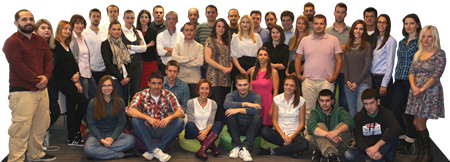TOMAS KUN - STRUKTURA NAUČNIH REVOLUCIJA
| Cena: |
| Želi ovaj predmet: | 4 |
| Stanje: | Polovan bez oštećenja |
| Garancija: | Ne |
| Isporuka: | AKS BEX City Express Pošta CC paket (Pošta) DExpress Post Express Lično preuzimanje |
| Plaćanje: | Tekući račun (pre slanja) PostNet (pre slanja) Ostalo (pre slanja) Lično |
| Grad: |
Beograd-Stari grad, Beograd-Stari grad |
ISBN: Ostalo
Godina izdanja: 1974
Jezik: Srpski
Autor: Strani
TOMAS KUN
STRUKTURA NAUČNIH REVOLUCIJA
Prevod i predgovor - Staniša Novaković
Izdavač - Nolit, Beograd
Godina - 1974
280 strana
20 cm
Edicija - Biblioteka Sazvežđa
Povez - Broširan
Stanje - Kao na slici, tekst bez podvlačenja
SADRŽAJ:
Staniša Novaković - Predgovor
Predgovor
I Uvod - Uloga za istoriju
II Put ka normalnoj nauci
III Priroda normalne nauke
IV Normalna nauka kao rešavanje zagonetki
V Prioritet paradigmi
VI Nepravilnost i iskrsavanje naučnih otkrića
VII Kriza i nastajanje naučnih revolucija
VIII Odgovor na krizu
IX Priroda i nužnost naučnih revolucija
X Revolucije kao promene pogleda na svet
XI Nevidljivost revolucija
XII Razrešavanje revolucija
XIII Progres kroz revolucije
Postscript - 1969
1. Paradigme i struktura zajednica
2. Paradigme i Konstelacije grupnih vezivanja
3. Paradigme kao zajednički primeri
4. Prećutno znanje i intuicija
5. Uzorni primer, nesamerljivost i revolucije
6. Revolucije i relativizam
7. Priroda nauke
`The Structure of Scientific Revolutions (1962; second edition 1970; abbreviated SSR) is a book about the history of science by philosopher Thomas S. Kuhn. Its publication was a landmark event in the history, philosophy, and sociology of scientific knowledge and triggered an ongoing worldwide assessment and reaction in—and beyond—those scholarly communities. Kuhn challenged the then prevailing view of progress in `normal science`. Normal scientific progress was viewed as `development-by-accumulation` of accepted facts and theories. Kuhn argued for an episodic model in which periods of such conceptual continuity in normal science were interrupted by periods of revolutionary science. The discovery of `anomalies` during revolutions in science leads to new paradigms. New paradigms then ask new questions of old data, move beyond the mere `puzzle-solving` of the previous paradigm, change the rules of the game and the `map` directing new research.
For example, Kuhn`s analysis of the Copernican Revolution emphasized that, in its beginning, it did not offer more accurate predictions of celestial events, such as planetary positions, than the Ptolemaic system, but instead appealed to some practitioners based on a promise of better, simpler, solutions that might be developed at some point in the future. Kuhn called the core concepts of an ascendant revolution its `paradigms` and thereby launched this word into widespread analogical use in the second half of the 20th century. Kuhn`s insistence that a paradigm shift was a mélange of sociology, enthusiasm and scientific promise, but not a logically determinate procedure, caused an uproar in reaction to his work. Kuhn addressed concerns in the 1969 postscript to the second edition. For some commentators Kuhn`s book introduced a realistic humanism into the core of science while for others the nobility of science was tarnished by Kuhn`s introduction of an irrational element into the heart of its greatest achievements.`
Ako Vas nešto zanima, slobodno pošaljite poruku.
Thomas S. Kuhn
1. Svakog dana, bilo kad, na mojoj adresi sa Limunda/Kupinda.
2. Svakog radnog dana posle 15h na Zelenom vencu ili Trgu republike.
Šaljem u inostranstvo, primam uplate preko servisa kao što su Pay Pal, RIA, Western Union (otvoren sam i za druge mogućnosti, javite se pre kupovine i dogovorićemo se).
Kao način slanja stavio sam samo Poštu i Postexpress jer sam s njima najviše sarađivao i vrlo sam zadovoljan, ali na Vaš zahtev mogu da šaljem i drugim službama.
Besplatna dostava na knjigama koje su obeležene tako se odnosi samo na slanje preporučenom tiskovinom.
Predmet: 81134205











